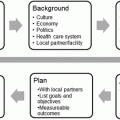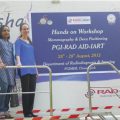© Springer Science+Business Media New York 2014
Daniel J. Mollura and Matthew P. Lungren (eds.)Radiology in Global Health10.1007/978-1-4614-0604-4_2121. Trauma Imaging in Global Health Radiology
(1)
Department of Radiology, Duke University Medical Center, 3808, Duke University Medical Center, Durham, NC 27712, USA
(2)
RAD-AID International, Chevy Chase, MD, USA
(3)
Lucile Packard Children’s Hospital, Stanford University Medical Center, Palo Alto, CA, USA
Matthew P. LungrenVice President of Education, Assistant Professor of Radiology (Corresponding author)
Email: mlungren@rad-aid.org
Introduction
The World Health Organization (WHO) reports that 16,000 people die from traumatic injuries every day, and for every person who dies, several thousand more are injured, many of them with permanent disabilities [1]. As the world continues to undergo an epidemiological transition towards increased socioeconomic development and urbanization, the worldwide costs of trauma are expected to significantly increase. In 2012, trauma ranks ninth as the leading cause of worldwide morbidity, and results in five million deaths annually, accounting for 15 % of years of life lost (an estimate of the toll of premature death) [2], with more than 90 % of global deaths from injuries occurring in low-income countries. Yet trauma is expected to increase from the ninth to the third leading cause of worldwide disease burden by the year 2020 [2]; this will ultimately disproportionately affect poorer, less developed countries [3].
Much of the global burden of traumatic related injuries and fatalities can be correlated to an increasing worldwide dependency on motor vehicles as a means of transport [4]. Motor vehicle accidents kill 1.2 million people and injure or disable tens of millions more worldwide every year, with most traffic-related deaths occurring in LMIC. One study has reported that more than 85 % of all deaths due to road traffic and 96 % of all children killed in road crashes occurred in developing countries [5]. Accidents also disproportionately involve men aged 15–44 years old, with pedestrians, cyclists, passengers on public transport and riders of motorized two-wheeled vehicles being those most commonly harmed [6]; these demographics also highlight the societal burden, particularly in patriarchal cultures in which young adult men are the primary wage earners for families. The overall costs from these accidents in LMIC exceed US$65 billion per year; this amount is greater than the total amount of developmental aid/assistance received in all of these countries combined.
Despite these staggering statistics, investment in trauma prevention worldwide is disproportionately low. For example, in 2006–2007, the WHO allocated less than 1 % of its annual budget to work-related injuries and physical violence worldwide [7], while other studies state that in the 1990s, the Disability Adjusted Life Years (DALY) value of external assistance provided was more than $50 for leprosy, $6.90 for blindness, $4 for HIV/AIDS and other sexually transmitted diseases, and $0.11 for accidental injuries/trauma (per affected person per event per year) [8].
The disproportionate rise in traumatic injuries and deaths in LMIC is further complicated given the endemic disparity in post-traumatic outcomes between LMIC and high-income countries. One recent study found that persons with life-threatening but salvageable injuries are six times more likely to die in a low-income setting (36 % mortality) than in a high-income setting (6 % mortality) [9], while another study compared outcomes for adult in low-income, middle-income, and high-income countries and found that the mortality rate rose from 35 % in high-income settings to 55 % in middle-income settings and to 63 % in low-income settings [10]. While the causes for the improved survival and functional outcome among patients injured in trauma in developed countries are multifactorial (e.g., proximity and availability of travel to hospitals and organized trauma care services), a significant portion is related to the lack of access to high-cost medical equipment and technology, specifically diagnostic imaging.
The predominant diagnostic imaging modalities used for trauma/emergency services in the developing world are X-ray and ultrasound [11]; in fact, these two modalities are alone able to meet over 90 % of the imaging needs of the population [12]. Rapid ultrasound may effectively screen for significant thoracoabdominal trauma including pneumothorax, cardiac tamponade, and abdominal organ injuries [11]. For the large number of patients who present with significant pulmonary or orthopedic conditions, radiography is critical to diagnosis and treatment [13].
Unfortunately in the majority of cases in which radiograph and ultrasound are not readily available, the necessity for long-distance patient transportation to facilities with adequate diagnostic capability can significantly delay treatment and lead to increased morbidity and mortality [11]. One group reported that in western Nepal many patients must travel over 10 h, and others over 2 days, to reach an X-ray facility; transportation costs alone for this may exceed an average monthly wage [11].
Clinical Considerations in Trauma
Traumatic Brain Injury
Traumatic brain injury (TBI) is a major cause of death and disability among the trauma patient population worldwide [14]. While exact statistics are lacking, TBI is a particular problem in developing countries [15]. In certain trauma populations in the developing world, the incidence of TBI has been reported to be as high as 74 % [16]; according to the WHO, head injury is one of the major causes of trauma-related disability and death worldwide [1].
While guidelines [17, 18] established for the management of severe TBI have shown to improve survival and functional outcome after severe head injury in high-income countries [19], these protocols require expensive resources, including CT. For example, post-traumatic extra-axial hemorrhage, diagnosed by CT, can require neurosurgical decompression for decreased morbidity and mortality. Even when CT scanners are present in low-income countries, many factors often render them unusable, including prohibitive maintenance costs and consequent long periods of breakdown [20]. If CT scanning is available in the setting of head trauma, the WHO has recommended that basic quality improvement programs should assure that all patients warranting CT scan of the head (generally Glasgow coma scale of 8 or less) can be imaged within 2 h of presentation [1]. It is important to consider that while current treatment strategies for TBI have been validated in the western medical literature [21], the effectiveness is unknown in the setting of inadequate infrastructure, absence of advanced medical imaging, lack of emergency medical services, and/or limited ICU availability [3].
Traumatic Spinal Cord Injury
Like TBI, traumatic spinal cord injury (TSCI) is an increasing health care challenge in the developing world. While difficult to gather exact statistics, the average age of patients with TSCI in the developing world has been reported to be below 30 years old [22], a devastating statistic given the high morbidity associated with TSCI. There is generally a high male to female ratio in TSCI, with reported ratios as high as 7.5:1 having been reported in the literature [23]. While falls are reported to be the most common primary cause of traumatic spinal cord injury in developing countries, with incidence ranging from 23 [24] to 37 % [25], many developing countries now report traffic accidents as the most common cause of TSCI [26].
The management of TSCI is challenging, even with a full complement of diagnostic and therapeutic resources available. While several studies have assessed short- and long-term survival rates after TSCI in developed countries, very few long-term outcome studies exist in developing countries. One study from Zimbabwe reported a 1-year survival rate of approximately 51 % [27], a significant improvement from earlier unpublished data from the same group. A separate study from Sierra Leone reported an in-hospital mortality rate of 29.2 % in the setting of TSCI [28], which was approximately three times higher than a similar series from Brazil [29], a much more affluent developing country. Recognition of the presence of risk of spinal injury is essential at all levels of the health care system.
While clinical evaluation is the first critical step in the evaluation of suspected spinal cord injury, radiographs are a very helpful adjunct and are considered the minimum requirement for imaging evaluation. The incidence of TSCI, like TBI, is likely to increase as the prevalence of motor vehicles continues to increase in the developing world. Many authors have advocated for a more comprehensive spinal injury response system in developing countries, including environment modification, vocational rehabilitation, and caregiver education [28].
Abdominal Injury
In addition to TBI and TSCI, post-traumatic abdominal injury (both blunt and penetrating) is an increasing cause of morbidity and mortality worldwide. As with TBI and TSCI, while physical examination and clinical evaluation of trauma patients are the first steps in evaluation, these methods are significantly augmented in the acute setting with ultrasound or CT capabilities. Ultrasonography is the primary method of screening patients with blunt abdominal trauma worldwide [30, 31]. Focused assessment with sonography for trauma (FAST) is a rapid bedside ultrasound examination which can be used to screen for the presence of free fluid in the abdomen or pelvis [32], the presence of which suggests traumatic gastrointestinal tract injury and has important clinical and management implications in the post-traumatic setting. According to previous reports, the morbidity of gastrointestinal tract injury is mostly related to delays in diagnosis [33].
Because of the much wider availability of ultrasound in the developing world, FAST is a very important diagnostic application in the setting of trauma. A Cochrane systematic review found that the sensitivity of FAST for detecting hemoperitoneum in trauma patients was 85–95 % [34]; the average specificity of FAST for intra-abdominal blunt trauma has been reported as 90–99 % [34–36], with one study investigating FAST in a developing world setting reporting a specificity of 100 %, regardless of mechanism of injury [37]. FAST scanning expedites the appropriate triage of trauma patients, decreasing time to definitive care and reducing demands for CT scanning, which is particularly important in low-resource areas [37]. Repeated scanning has been shown to increase the sensitivity of FAST to above 90 % for detection of the presence of free intraperitoneal fluid [38, 39]. FAST is often considered less sensitive than other methods of determining the extent of post-traumatic intra-abdominal injury such as diagnostic peritoneal lavage (DPL) or CT. However, a direct comparison of FAST and DPL showed FAST scans to be a good alternative, with a similar specificity and a much lower complication rate [40]. While CT remains the gold standard for assessment of intra-abdominal traumatic injury, FAST is an acceptable alternative in resource-poor facilities, where CT is often unavailable [41, 42]. Despite the high negative predictive value of FAST in blunt trauma, reported as 91.6 % in one study [37], it is important to remember that the absence of free fluid on FAST scanning does not exclude intra-abdominal injury, with one study revealing the presence of visceral injury on CT in 34 % of patients with no evidence of hemoperitoneum on FAST evaluation [43].
As described elsewhere in the text, ultrasound is an excellent but heavily operator-dependent modality, and optimal use of ultrasound for assessment of trauma necessitates an effectively trained team of sonographers and/or other clinically based professionals, including physicians and nurses. Ultimately any strategy seeking to incorporate clinical ultrasound in LMIC for trauma evaluation will require an effective clinical education component for effective implementation beyond simply equipment procurement related efforts.
Extremity Injury
In addition to TBI, TSCI, and traumatic abdominal injury, traumatic injury of the extremities is a significant worldwide cause of morbidity. Socioeconomic change within developing countries, as described at the beginning of this chapter, including an increased dependence on motor vehicles, has resulted in a significant increase both in the number and in the complexity of injuries of the extremities [44, 45]. Resources are often in short supply to address such injuries. This has led, as one author described, to the dilemma in developing countries of attempting to manage what can be termed “first-world injuries using third-world facilities” [4]. Untreated fractures, many of which are the result of road traffic accidents as previously described, are a major burden of disease.
Musculoskeletal disabilities can be greatly reduced if promptly recognized and corrected [1]. X-ray facilities are generally designated as essential by the WHO for the diagnosis, treatment, and successful management of skeletal injuries. In addition, portable X-ray capability greatly facilitates the diagnosis of skeletal injury and the management of patients in traction and during operative procedures. C-arm fluoroscopy is also a very important component of many orthopedic interventions in the setting of trauma, as it reduces operative time, can decrease radiation exposure, and allows for closed, rather than open, procedures [46, 47].
It is estimated that two thirds of the world has no access to orthopedic care as the majority of the world’s orthopedic surgeons are found in high-income countries. In countries with poor access to resources, nonoperative treatment is often offered for fractures, despite the fact that operative repair would result in a better functional outcome. The reasons for this include the unavailability of implants, deficiency of equipment and imaging capability, and lack of surgical training. While the majority of fractures will heal whether or not formal treatment is undertaken, the problem is that healing may not occur in the desired position or alignment, thus compromising function [4]. In general, extremity trauma continues to constitute a major trauma-related problem in the developing world and proves to be a multifactorial problem.
Evidence-Based Strategy for Treatment of Trauma
Trauma Teams
Organized trauma teams have proven to be a vital adjunct to medical imaging in the successful treatment of trauma patients in the developed world. One study reported that in the presence of an organized trauma team, resuscitation time was reduced by 54 % [48]. This was interpreted to be a result of task allocation and the adoption of simultaneous rather than sequential resuscitation. The involvement of an experienced senior trauma team leader, who was not actively involved in the physical aspects of the resuscitation, was found to help shorten resuscitation times [49]. Compared to resuscitations without a designated team leader, resuscitations that had a team leader had an increased proportion of completed secondary surveys and formulated definitive plans. A different study evaluating pediatric trauma care found that the improved organization of a dedicated trauma team resulted in shorter times to CT scanning for head-injured patients, shorter time to surgery when necessary, and decreased times in the ER [50]. It has been reported that the establishment of organized trauma teams can be accomplished at very little cost [51].
Stay updated, free articles. Join our Telegram channel

Full access? Get Clinical Tree






